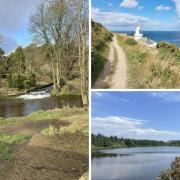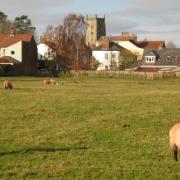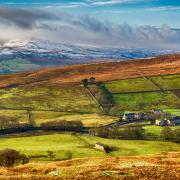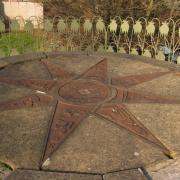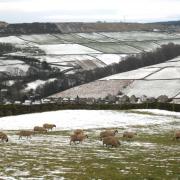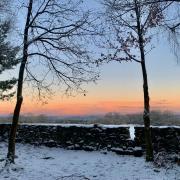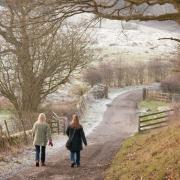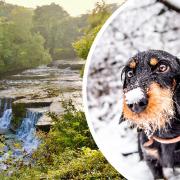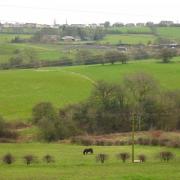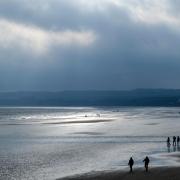A new guide to walking Yorkshire’s coastline covers its entire 120-mile length. Its author, Andrew Vine, explains the joys of exploring this treasured coast.

It's one of the longest and most spectacular coastlines in the country, and putting your best foot forward along the clifftop path offers both a grandstand view and a unique insight into its fascinating heritage.
I've been walking the Yorkshire coast for more than 35 years, and know every mile. Yet there's a magical quality about it that makes the coastline feel fresh and new every time I step out along the clifftop path or the beaches.
It might be the vistas of headlands and bays stretching away as far the eye can see, or coves hidden from view until they reveal themselves as a surprise, but somehow the coast never loses its power to amaze and delight, however often the clifftop path or beaches are walked.
The 120-mile coastline between Redcar and Spurn is often overlooked as a long-distance walk, probably because it isn't a designated national trail like the Pennine Way or Cleveland Way, 50 miles of which, between Saltburn and Filey, runs along the coast.
Yet walking the coast is as rewarding as any long-distance path. There are cliffs that soar to 600ft or more, havens for seabirds, miles of the country's finest beaches and of course some of Britain's best-loved seaside resorts including Whitby, Scarborough and Filey.
The path passes through them all, along with the fishing villages of Staithes and Robin Hood's Bay, bustling Bridlington which is the country's leading shellfish port, Hornsea and Withernsea.
But within a mile of two of the towns packed with visitors, the path meanders through a landscape that is wild and romantic, sometimes only a few feet away from drops so sheer they are dizzying to look over and above inlets honeycombed with caves where rock stacks stand like sentinels.
Walking brings you especially close to that wildness, and the wildlife for which Yorkshire's coast is a haven.
It isn't just the great seabird colonies around Bempton in spring and early summer, where half a million nest on sheer chalk cliffs and soar at your eye level, or even the seals bobbing their heads above the waves that makes you feel that nature is close enough to touch.
It's the coast itself, by turns forbidding and benign, its contours jagged then graceful, shaped not only by the sea that has carved and scoured its bays and beaches, but by human activity, invasion, industry and war.
Walking the coastline is to witness the North Sea in all its moods. It can be a sullen grey of heaving swells, or a gentle calm of sparkling blues and greens like a tropical ocean. Its voice turns from a roar to a whisper as it pounds at cliffs and sea walls, hollowing out caves and hurling waves and spray over promenades, then laps at the beach, docile as a mill-pond.
The sea and the communities which grew up along the shoreline have many stories to tell, and it's another aspect of the coast's magic that they seem to whisper them as you walk.
An extraordinarily rich heritage is closely felt at every step. The great monuments like iconic, ruined Whitby Abbey and Scarborough Castle are the landmarks everybody knows, but there is much more history to be found along the way.
Like the rugged little fishing cobles working close inshore, whose history goes back at least as far as the Abbey, being direct descendants of the Viking longships that once landed raiding parties on the beaches.
Or the lawless past of Robin Hood's Bay, so very much at odds with its picture-postcard prettiness. For 150 years in the 18th and 19th centuries, it was the favoured haunt of smugglers, its closely-packed cottages so riddled with secret passages that contraband could be passed from the beach to the top of the village without ever seeing the light of day.
The landscape itself has stories to tell. Scarred cliffs between Saltburn and Ravenscar are the legacy of being mined for alum, a chemical used to dye wool, in the 17th and 18th centuries.
The lighthouses, too, at Whitby, Flamborough Head, Withernsea and Spurn bear witness to mankind's struggle with a coastline that can be treacherous. Thousands of ships and their crews have been wrecked all along the coast over the course of centuries.
Even now, in an age of global positioning equipment that keeps ships safer than they have ever been, the lighthouses at Whitby and Flamborough still send their beams scything across the sea to warn mariners to stay well clear of the shore.
And when walking the coast, the beauty and heritage come so sharply into focus that the only thing to do is stop for a while to simply take it all in.
Yorkshire Coast Path, by Andrew Vine, is published by Safe Haven Books in association with Welcome to Yorkshire at £14.99




